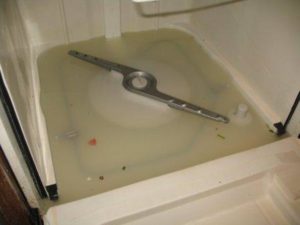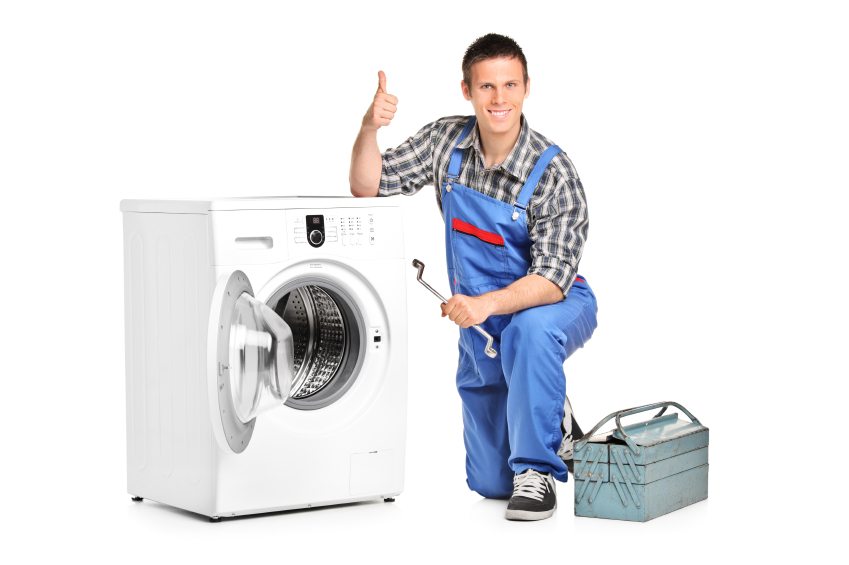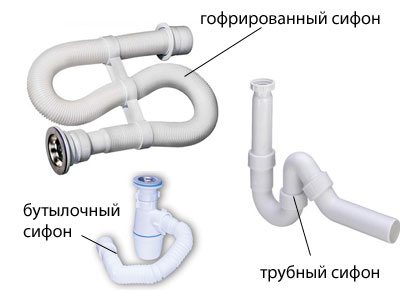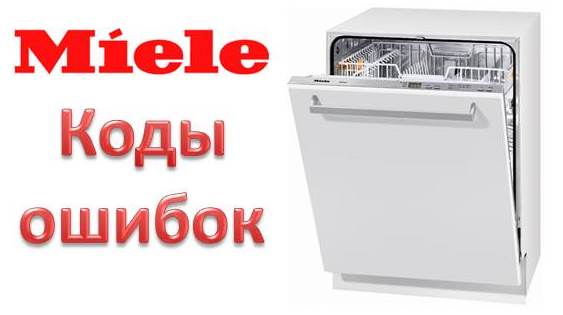Clogged dishwasher
 The dishwasher suddenly stops while washing dishes after dinner, which means there is a blockage in the machine. This is the most common cause of a breakdown, when the car seems to whistle, tries to make some sounds, or maybe just stops silently. What causes a clog in the dishwasher, how to eliminate it and prevent it - this is what we have to find out.
The dishwasher suddenly stops while washing dishes after dinner, which means there is a blockage in the machine. This is the most common cause of a breakdown, when the car seems to whistle, tries to make some sounds, or maybe just stops silently. What causes a clog in the dishwasher, how to eliminate it and prevent it - this is what we have to find out.
Causes
If you suspect that the dishwasher has stopped due to a clog, then do not rush to clean the machine. A blockage can occur not only inside the machine, but also outside, or more precisely in the sewer or in the siphon, to which, as a rule, the drain hose of the equipment is connected.
Note! If water begins to drain poorly and slowly from the sink, then most likely the siphon is clogged, which means that the dishwasher will soon stop draining water.
The cause of any blockage is food debris, bones from fruit, fish or meat, dirty napkins and even toothpicks that fall into the drain system from uncleaned dishes. The cause of the blockage may be small fragments from dishes that broke during washing. The inside of the dishwasher may become clogged:
- cleaning filter located at the bottom of the tank;
- drain pump;
- drain hose;
- blades spraying water.
In addition, the filter located on the water supply to the machine may become clogged. It can become clogged with rust particles and salt deposits. This usually happens when the water supply is frequently turned off, when after repair work the water supplied is dirty and rusty.
Troubleshooting
Is your dishwasher clogged? You will have to clean it, because any blockage can only be removed by cleaning.If the sewer is clogged, you can use one of the following methods:
- use a wire with a small brush at the end;
- the second method, not very pleasant, but effective, is to disconnect the siphon from all hoses and rinse it with water;
- use special chemicals to clean sewer pipes.
In the case of internal blockages, you will have to work hard if you do not plan to call a specialist. First, prepare some tools, you will probably need them, namely: a screwdriver, pliers, tweezers with long probes and some kind of container for dirty water.
So, disconnect the dishwasher from the AC power supply, and then remove the drain hose from the siphon outlet, directing it into a bucket or other container under water. If the water does not drain, there is an internal blockage. Disconnect, if possible without disassembling the machine, the second end of the drain hose and wash the part under water pressure, use a cleaning cable. You couldn't disconnect the hose, so leave it for now.
Now we open the machine and free it from the baskets and scoop out the water to proceed to cleaning the internal parts:
- unscrew the filter mesh and pull it out along with the filter;

More details on how to remove the filter are described in the instructions for your dishwasher model.
- wash the parts with water and a brush;
- unscrew the drain pump cover to check the impeller, clean it if possible, nothing should interfere with its rotation. Use tweezers; it’s better not to climb with your bare hands.

If you cannot clean the impeller from inside the machine, you will have to disassemble it. The situation is more complicated with built-in appliances, but there is no other way.Turn the dishwasher on its side, disconnect the tray and thus get to the pump. This will make it easier to clean it. At this point, you can also disconnect the second end of the drain hose to clean it. After the “water” procedures, assemble the car.

After reassembling the car, rinse the tank, then wipe it down. The spray blades can be pre-soaked in water with dissolved dishwashing detergent, then cleaned, rinsed and returned to their place. With the right approach and skill, removing the blockage is not so difficult.
How to prevent it?
But what can you do to prevent blockages from occurring at all? It’s simple – follow simple rules for using a dishwasher:
- It is good to clean dishes from food debris, remove napkins, toothpicks and other debris. In some cases, you can pre-rinse the dishes.
- Rinse the coarse filter at least 2-3 times.
- Regularly wash and keep the blades and the entire machine clean, removing greasy deposits.
- Clean the filling filter every six months and replace it if necessary.
- Clean the machine from scale using special products or citric acid.
- It is good to dry the equipment from the inside so that there is no unpleasant odor and bacteria and mold do not grow.
As you can see, keeping your dishwasher clean is quite simple; you will save a lot of effort and nerves than if you had to remove a clog in the dishwasher. So, rules are meant to be followed, not broken!
Interesting:
Reader comments
- Share your opinion - leave a comment
Categories
Washing machine repair


For buyers

For users

Dishwasher

















Add a comment